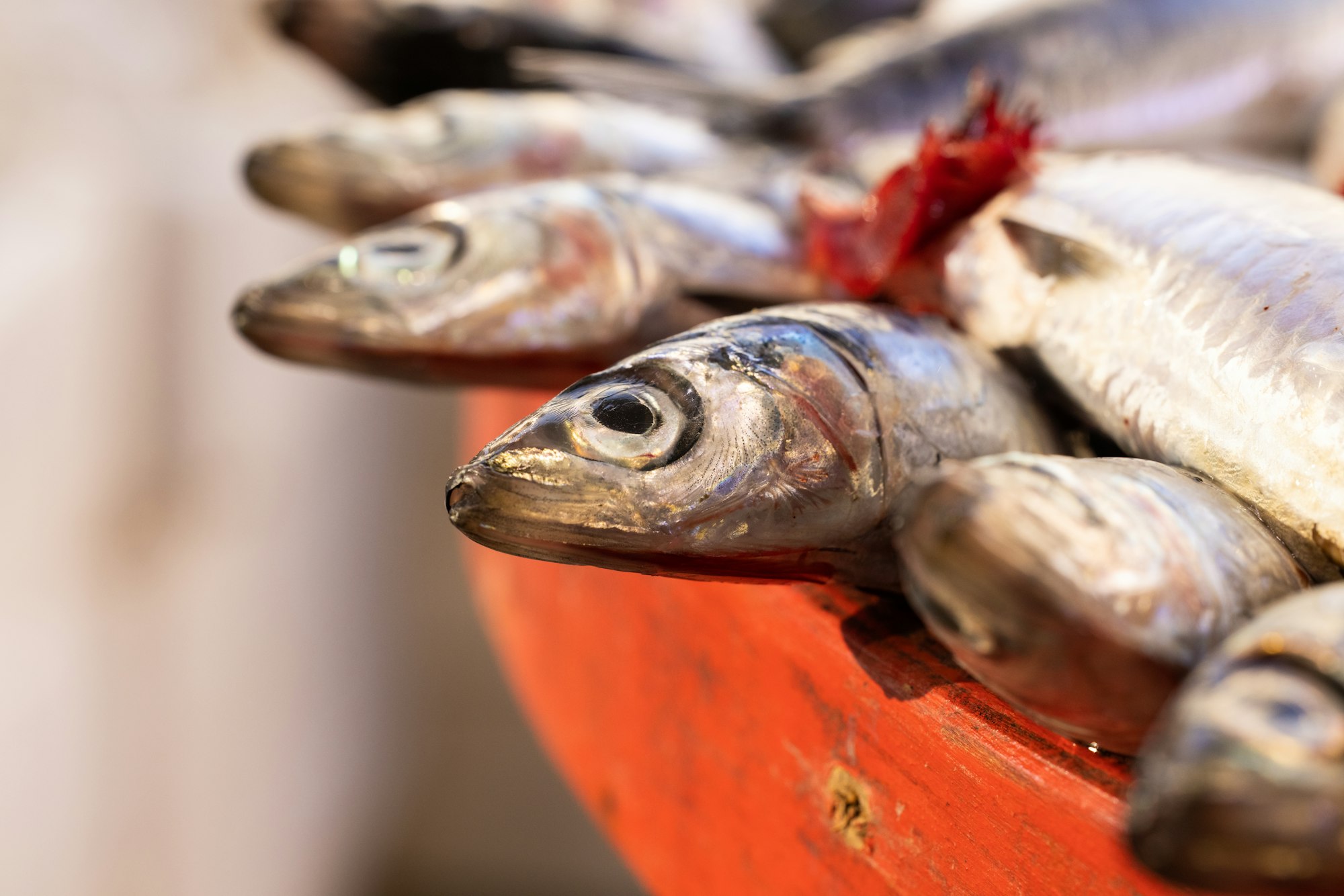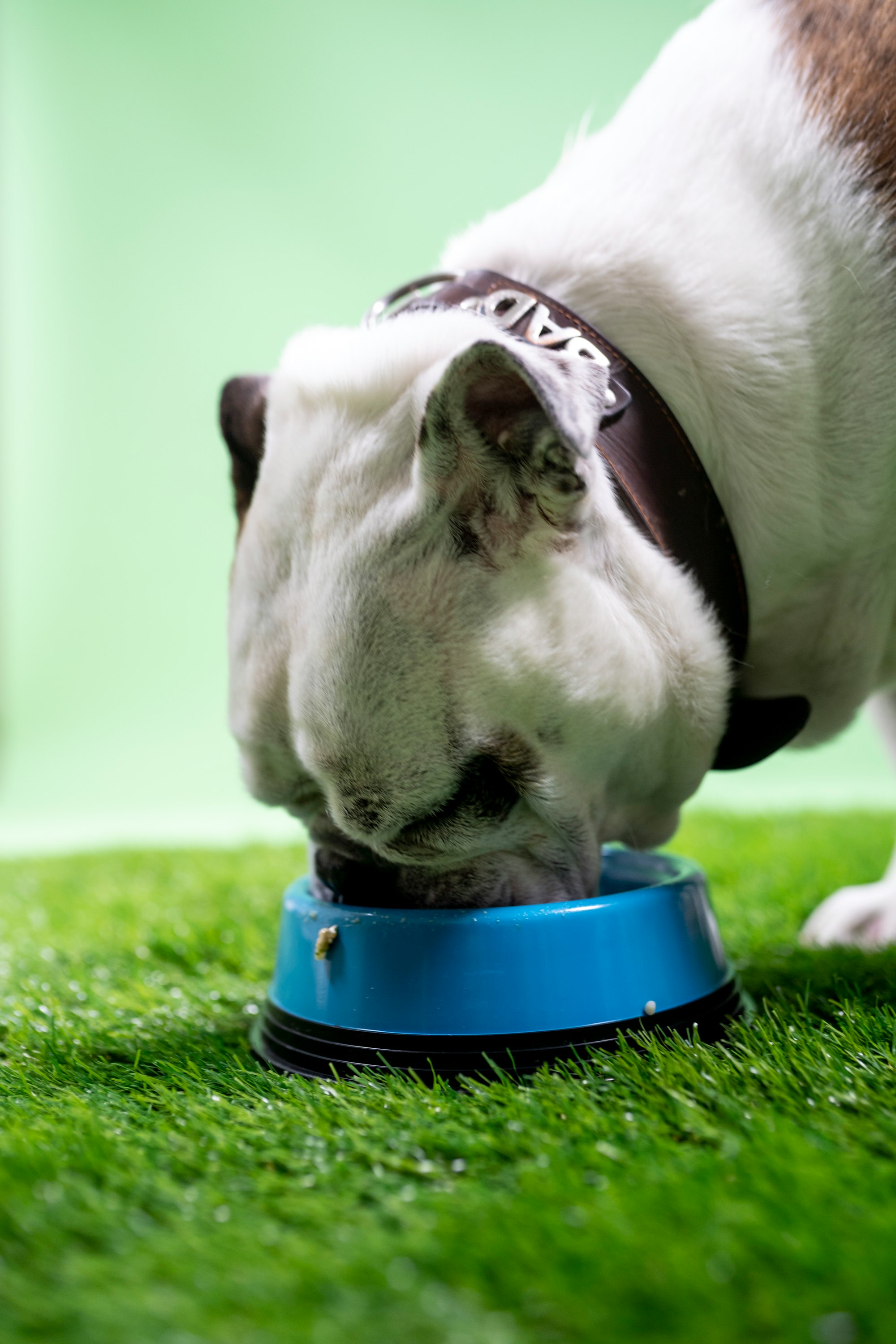When it comes to canine nutrition, pet owners frequently search for alternatives to offer their dogs a varied and balanced diet. While some might glance at their dinner and wonder, “Can dogs eat anchovies?”, others might be tempted by the potential benefits of these small fish. In this comprehensive guide, we’ll dive deep into the world of anchovies as potential dog treats, highlighting their benefits and sounding the necessary alarms.
Understanding Anchovies and Their Nutritional Profile
Anchovies are small, oily fish often found in the Mediterranean Sea and the Atlantic Ocean. Apart from their distinct taste that many people relish, anchovies are nutrient-dense, offering:
- Omega-3 Fatty Acids: These essential fats support skin and coat health, reduce inflammation, and aid cognitive function.
- Proteins: A crucial building block for muscles and overall growth.
- Vitamins and Minerals: Including Vitamin E, calcium, and iron.

Why Consider Anchovies for Your Dog?
The Benefits Simplified
- Heart Health: The Omega-3 fatty acids in anchovies can promote heart health in dogs, similar to their effects in humans.
- Joint Support: The anti-inflammatory properties can assist older dogs or those suffering from joint issues.
- Boost to Immune System: The vitamins and minerals in anchovies can potentially enhance a dog’s immune response.
Potential Risks and Cautions
Proceed with Knowledge and Care
- Salt Content: Many anchovies, especially those canned or preserved, are high in salt. Excessive salt can be detrimental to dogs, leading to increased thirst, urination, and even sodium ion poisoning.
- Bones: Though anchovy bones are soft and small, they might pose a choking hazard, especially for tiny dog breeds.
- Additives: If you're sourcing anchovies from a can or jar, be wary of additional ingredients like garlic or spices, which can be harmful to dogs.
Choosing the Right Anchovy for Your Dog
Unsalted and Fresh: Whenever possible, opt for unsalted, fresh anchovies. If using canned versions, rinse them thoroughly to remove any excess salt or preservatives.
- Cooked over Raw: Cooking anchovies can help in eliminating any potential pathogens. Always ensure the fish is cooked thoroughly and is boneless.
- Moderation is Key: Like with any treat, moderation is essential. Introduce anchovies into your dog's diet slowly and in small quantities, observing for any adverse reactions.
Alternatives to Anchovies
If you're on the fence about feeding your dog anchovies, there are other fish alternatives to consider:
- Sardines: These are a close cousin to anchovies. When unsalted and boneless, they make an excellent treat packed with Omega-3s.
- Salmon: A popular choice, ensure it's cooked and free from bones. Remember to avoid raw salmon due to potential parasite risks.
Factors to Consider Before Introducing Anchovies
If you're contemplating adding anchovies or any fish to your dog's diet, take into account these aspects:
- Size of the Dog: While larger breeds might easily handle a couple of anchovies, smaller breeds should be given fewer due to their size and digestive capacity.
- Age and Health: Puppies and older dogs might have different nutritional needs and sensitivities. Additionally, dogs with specific health conditions might react differently to new foods.
- Dietary Balance: Remember, treats (including anchovies) should only make up about 10% of your dog's daily caloric intake. Ensure that the primary diet remains balanced and nutritious.
Storing and Preparing Anchovies
- Storage: If you're buying fresh anchovies, remember they have a short shelf life. Store them in a refrigerator and use them within a day or two. If you're purchasing canned anchovies, always check the expiration date.
- Preparation: While cooking, avoid adding any seasoning, especially onions or garlic, which are toxic to dogs. Grilling or steaming are the preferred methods over frying.
Feedback from Other Dog Owners
While there's plenty of scientific data and expert advice, sometimes real-life experiences can offer invaluable insights. Many dog owners have reported their pets loving the taste of anchovies. However, a few have mentioned mild digestive upsets when introduced in larger quantities suddenly. The common consensus? Start slow, monitor reactions, and adjust accordingly.
Understanding Anchovies in the Context of Canine Evolution
While we're discussing modern-day dietary options for our beloved pets, it's also worth looking at where dogs come from and how evolution plays a role in their diet. Domestic dogs, or Canis lupus familiaris, have been companions to humans for thousands of years, evolving alongside us and often sharing our food sources.
Historical Diet of Dogs
Before dogs became our cozy home companions, they were wild animals, scavenging and hunting for food. Their ancestors primarily consumed meat, but they were also opportunistic eaters. This means that if a pack of wild dogs came across a dead fish or a heap of anchovies, they would likely have indulged.
Biodiversity and Dog Diet
Introducing a variety of foods to your dog's diet can mimic the natural biodiversity of the diets of their ancestors. Fish, including anchovies, offers a break from the routine chicken, beef, or lamb, often found in commercial dog foods.
Digestive Enzymes and Anchovies
While dogs have evolved alongside humans, their digestive systems remain primarily carnivorous. However, this doesn't mean they can't digest other foods. The enzymes present in a dog's digestive tract can break down the proteins found in fish like anchovies efficiently. It's also why they can derive significant nutritional benefits from them.
Monitoring Your Dog's Reaction
Even with the evolutionary context, each dog is unique. Some might have allergies or sensitivities that others don't. When introducing anchovies:
- Watch for Allergies: Symptoms might include itching, swelling, or gastrointestinal issues.
- Observe Digestion: Some dogs might have looser stools or might vomit if the anchovies don't agree with them.
- Appetite Changes: If your dog suddenly becomes picky or refuses other foods in favor of anchovies, it might be wise to cut back.
Incorporating Anchovies with Other Foods
A fun way to introduce anchovies to your dog’s diet is by incorporating them into recipes:
- Anchovy Dog Biscuits: Blend anchovies with some basic dog biscuit ingredients for a fishy twist on a classic treat.
- Mixed Meals: Add a few anchovies to your dog's regular wet food for an added boost of flavor and nutrients.

Beyond Anchovies: A Holistic Approach to Canine Nutrition
As we dive deeper into the intricacies of dog diets and the inclusion of anchovies, it becomes increasingly evident that our choices should always be part of a broader, holistic approach to canine nutrition. Anchovies, while beneficial, are just one piece of the puzzle.
Balanced Diet: The Key to Optimal Health
Even if anchovies are introduced as a treat or supplementary food, the mainstay of your dog's diet should be balanced and tailored to their specific needs. Factors influencing diet include:
- Age: Puppies, adults, and senior dogs have varying nutritional requirements.
- Activity Level: A hyperactive Border Collie would have different caloric needs than a more sedentary breed like a Basset Hound.
- Health Conditions: Dogs with ailments like diabetes, kidney issues, or food allergies require specialized diets.
Hydration: An Often Overlooked Factor
While we’re focused on food, water remains crucial. If you're offering saltier foods (even if you rinse the anchovies), ensure your dog has constant access to fresh water to prevent dehydration.
Supplements and Canine Health
Sometimes, despite our best efforts, dogs might need an extra boost. If you're feeding your dog anchovies for their Omega-3s, but they don't seem to take to them, fish oil supplements are an option.
However, always consult with a vet before introducing any supplement to ensure it's appropriate and won't interfere with other aspects of their health or diet.
Diversity in Diet: Exploring Beyond Fish
While fish, including anchovies, offer unique nutritional benefits, other foods can also be beneficial:
- Vegetables: Carrots, green beans, and pumpkin are dog-friendly veggies that provide fiber, vitamins, and minerals.
- Fruits: Apples (seedless), blueberries, and bananas can be occasional treats rich in antioxidants and other nutrients.
- Lean Meats: Chicken, turkey, and lean beef are excellent protein sources.
Remember, some foods are toxic to dogs, like grapes, onions, and chocolate. Always do your research before introducing anything new.
Engaging with a Veterinary Nutritionist
If you're genuinely committed to providing the best diet for your dog, consider engaging with a veterinary nutritionist. These experts can offer guidance tailored to your dog’s specific needs, ensuring they get a balanced diet optimized for their health.
Building Trust Through Feeding: The Bond Between Owners and Their Dogs
Navigating the myriad of food options, like the intriguing anchovy, is about more than just health; it's about trust. Our pets, in their simple and genuine way, rely on us to make the best decisions for them. Every meal, every treat, is an affirmation of the bond between owner and dog.
A Shared Experience: More Than Just Nutrition
Introducing new foods to your dog, whether it's anchovies or a slice of watermelon on a hot day, is also about sharing experiences:
- Discovering Preferences: Just as we have favorite foods, so do dogs. Observing their reactions can be a joy. Some dogs might relish the strong, fishy taste of anchovies, while others might turn their noses up, preferring a different treat.
- Creating Moments: The act of feeding becomes a shared ritual. Those moments of anticipation, the wagging tail, the eager eyes – they are all part of creating memories.
Safety First: A Manifestation of Care
Exercising caution, doing our research, and consulting with vets are not just acts of responsibility; they're manifestations of love:
- Reading Labels: Just as we’ve emphasized the importance of understanding what goes into the anchovies you offer, it's vital to develop the habit of reading labels on all dog foods and treats. What are the ingredients? Where is it produced? Are there additives that might be harmful?
- Adjusting Portions: It’s tempting to give in to those pleading eyes and offer more treats. However, practicing restraint and ensuring your dog maintains a healthy weight is a long-term act of care.

Engaging in Continued Learning
The world of pet care is always evolving, with new research shedding light on better practices, diets, and care routines:
- Stay Updated: Just as we’ve explored the nuances of feeding anchovies in-depth, always stay on the lookout for new information. Veterinary practices, pet care websites, and scientific journals often provide updated insights.
- Join Pet Communities: Engaging with other dog owners can offer a wealth of practical knowledge. Whether it’s online forums, local pet clubs, or doggy playdates, these interactions can be informative.
The Bigger Picture: Well-being Beyond Diet
While we've delved deep into the realm of canine nutrition, remember that a dog’s well-being extends beyond their diet:
- Regular Exercise: Ensure your dog gets adequate physical activity, tailored to their breed, age, and health.
- Mental Stimulation: Toys, training sessions, and interactive games keep their minds sharp.
- Routine Check-ups: Regular vet visits ensure early detection of potential issues, ensuring a long, healthy life for your pet.
The Emotional Connect: Food as an Expression of Love
Food, in many cultures and species, is not merely sustenance. It’s an expression of love, care, and the desire to nurture. As we contemplate the implications of every dietary choice, from anchovies to apples, it becomes evident that these decisions reflect our emotional connection with our furry companions.
Quality Over Quantity
In a world inundated with choices and flashy marketing, it's easy to get swayed by quantity—more treats, bigger portions, and endless varieties. However, the quality of what we offer our dogs speaks volumes:
- Holistic Health: By providing high-quality foods and treats, you're ensuring not just physical health but also emotional well-being. A well-fed dog, free from dietary discomforts, is happier and more content.
- Investment in Longevity: Quality food might sometimes come with a heftier price tag, but it's an investment. It could mean fewer vet bills in the long run and more years of shared companionship.
Feeding Rituals: Strengthening Bonds
The act of feeding isn’t just about nutrition; it's a ritual. It's a few moments every day when the outside world fades away, and it's just you and your pet:
- Mindful Feeding: Instead of just filling up the bowl and walking away, take a moment. Talk to your dog, make eye contact, and use this time to strengthen your bond.
- Interactive Meals: Consider puzzle feeders or toys that dispense food. It makes mealtime a fun, engaging activity and provides mental stimulation.
Recognizing and Celebrating Individuality
Each dog, just like humans, is unique. They have personalities, quirks, likes, and dislikes:
- Tailored Diets: What works for one might not work for another. Recognizing and respecting your dog's individual dietary needs and preferences is essential. Some might love the taste of anchovies, while others might prefer a different protein source.
- Feedback is Key: Always observe and adapt. Your dog's behavior, energy levels, and physical condition provide crucial feedback on dietary choices.
Beyond Food: Holistic Care for the Soul
A dog's well-being isn't just about the body. Their soul, their essence, also needs nurturing:
- Affection and Touch: Regular petting, cuddling, and even massage can help in bonding and provide emotional comfort to your pet.
- Communication: Talk to your dogs. While they might not understand every word, they pick up on tones, emotions, and intent.
- Quality Time: Spend dedicated time with your dog—playing, walking, or simply lying down together. These moments of shared presence strengthen your bond.
Conclusion:
In exploring the dietary inclusion of anchovies for dogs, we've journeyed through the intricate landscape of canine nutrition, emphasizing quality, safety, and holistic well-being. Anchovies, while nutritious, serve as a symbol of the broader care we must exercise in feeding our pets. This extends beyond mere sustenance to encompass trust, bonding, and understanding our dogs' unique needs. Balancing diet with emotional connectivity, mindful rituals, and recognizing individual preferences ensures not just their physical health but also their emotional and mental well-being. Ultimately, our choices reflect our deep-rooted commitment to our furry companions, nurturing a bond that's both nourishing and enduring.
FAQs: Can Dogs Eat Anchovies? Benefits and Cautions Explained
1. Can dogs eat anchovies?
Yes, dogs can eat anchovies. They are rich in Omega-3 fatty acids and other nutrients that can benefit your dog's health.
2. Are there any risks associated with feeding my dog anchovies?
The primary concerns are the salt content in many anchovies, potential choking hazards from bones (especially for small breeds), and any additives that might be present in canned versions.
3. How should I prepare anchovies for my dog?
Opt for unsalted, fresh anchovies whenever possible. If using canned versions, rinse them thoroughly to remove excess salt. Cooking them (either grilling or steaming) is preferable to offering raw.
4. How often can I give my dog anchovies?
Moderation is key. Consider anchovies as a treat rather than a regular meal item. Depending on your dog's size, 1-3 anchovies a week can be a general guideline.
5. Are there any signs of anchovy toxicity I should watch for?
While there's no direct toxicity, excessive salt intake from salted anchovies can lead to increased thirst, frequent urination, and in severe cases, sodium ion poisoning. If you notice any unusual behavior, consult your vet.
6. Can puppies eat anchovies?
While puppies can eat anchovies, introduce them slowly and in smaller quantities, always monitoring for any adverse reactions.
7. What are some alternatives to anchovies?
Sardines and salmon are excellent fish alternatives, provided they are prepared safely (cooked and boneless for salmon).
8. Should I consult a vet before introducing anchovies to my dog's diet?
Yes, it's always a good idea to consult with a veterinarian when introducing any new food into your dog's diet. They can provide tailored advice based on your pet's specific health needs.
9. How do anchovies compare to other fish in terms of nutrition?
Anchovies are particularly rich in Omega-3 fatty acids, which support heart health, skin and coat condition, and cognitive function. They are also lower in mercury than many larger fish.
10. Can I make homemade dog treats using anchovies?
Absolutely! You can create anchovy-based biscuits or treats, ensuring you avoid any harmful additives and maintain a balanced overall diet for your pet.




